Presentation
Presenting with headache followed by altered sensorium.
Patient Data
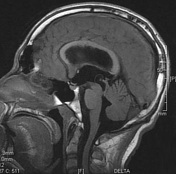

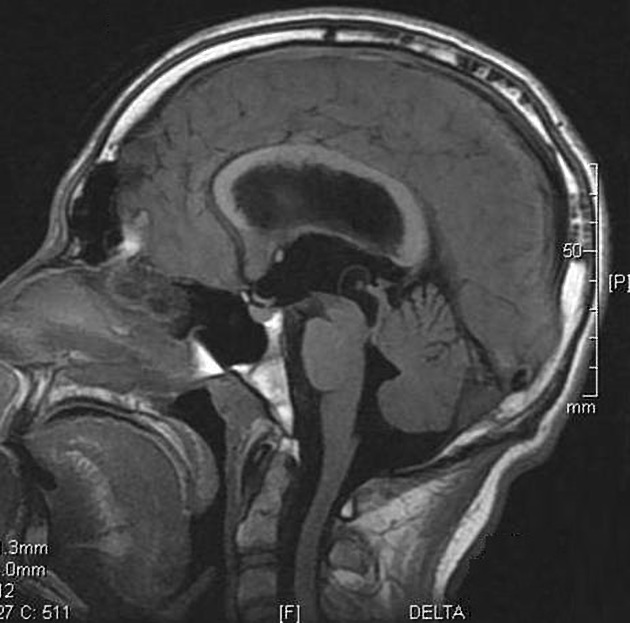
Cysticercosis with scolex lodged at aqueduct causing hydrocephalus.
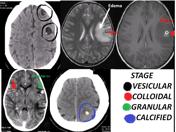
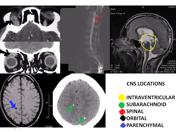
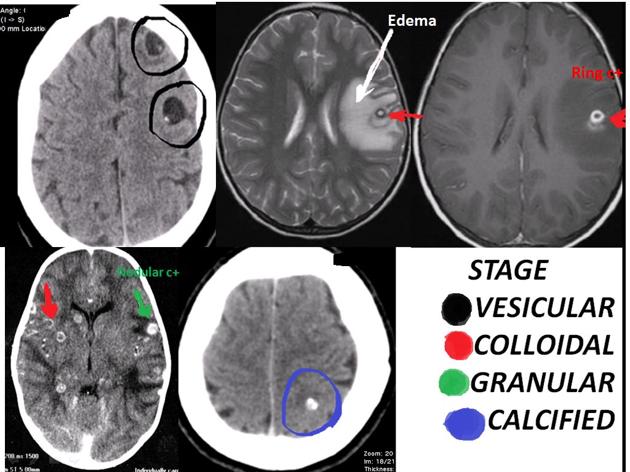
Various stages and locations of neurocysticercosis.
Case Discussion
Cysticercosis is currently considered the most common parasitic disease of the CNS. In about 10% of neurocysticercosis cases, the cysts are found within the cerebral ventricles or in cisterns. The lesions are usually clinically silent until obstruction occurs, secondary to either the location of the cystic lesion or associated ependymitis caused by adjacent granulomatous response. The most common symptoms are related to hydrocephalus. The onset of symptoms, including headache, vomiting, seizures, can be rather sudden and can result in death. A degenerating cyst can cause symptoms of meningitis. Cisternal cysts can act like brain tumors, causing symptoms due to compression of the brain. The symptoms will depend upon which part of the brain is affected.
4 stages of cysticercosis on imaging:
- vesicular cyst - Well-defined scolex, minimal contrast enhancement and mass effect
- colloidal cyst - Ring enhancement and perilesional edema
- nodular/granular stage - Nodule with diffuse enhancement and no cystic component
- calcified stage - Multiple punctuate calcifications
location in CNS:
- intraventricular
- subarachnoid
- parenchymal
- orbital
- spinal




 Unable to process the form. Check for errors and try again.
Unable to process the form. Check for errors and try again.